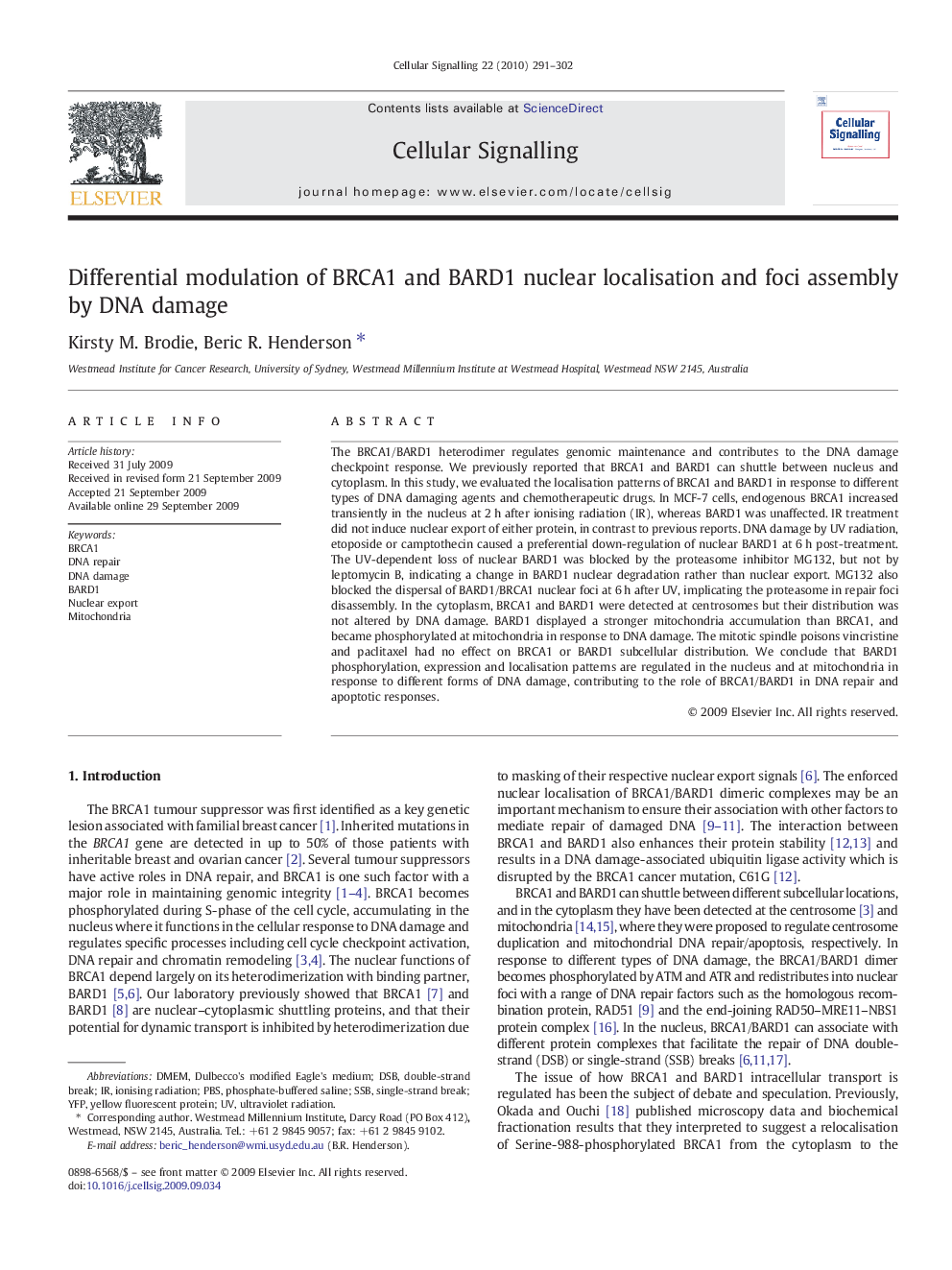| Article ID | Journal | Published Year | Pages | File Type |
|---|---|---|---|---|
| 10815847 | Cellular Signalling | 2010 | 12 Pages |
Abstract
The BRCA1/BARD1 heterodimer regulates genomic maintenance and contributes to the DNA damage checkpoint response. We previously reported that BRCA1 and BARD1 can shuttle between nucleus and cytoplasm. In this study, we evaluated the localisation patterns of BRCA1 and BARD1 in response to different types of DNA damaging agents and chemotherapeutic drugs. In MCF-7 cells, endogenous BRCA1 increased transiently in the nucleus at 2Â h after ionising radiation (IR), whereas BARD1 was unaffected. IR treatment did not induce nuclear export of either protein, in contrast to previous reports. DNA damage by UV radiation, etoposide or camptothecin caused a preferential down-regulation of nuclear BARD1 at 6Â h post-treatment. The UV-dependent loss of nuclear BARD1 was blocked by the proteasome inhibitor MG132, but not by leptomycin B, indicating a change in BARD1 nuclear degradation rather than nuclear export. MG132 also blocked the dispersal of BARD1/BRCA1 nuclear foci at 6Â h after UV, implicating the proteasome in repair foci disassembly. In the cytoplasm, BRCA1 and BARD1 were detected at centrosomes but their distribution was not altered by DNA damage. BARD1 displayed a stronger mitochondria accumulation than BRCA1, and became phosphorylated at mitochondria in response to DNA damage. The mitotic spindle poisons vincristine and paclitaxel had no effect on BRCA1 or BARD1 subcellular distribution. We conclude that BARD1 phosphorylation, expression and localisation patterns are regulated in the nucleus and at mitochondria in response to different forms of DNA damage, contributing to the role of BRCA1/BARD1 in DNA repair and apoptotic responses.
Keywords
Related Topics
Life Sciences
Biochemistry, Genetics and Molecular Biology
Biochemistry
Authors
Kirsty M. Brodie, Beric R. Henderson,
